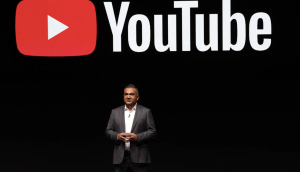Rob Young, SVP planning services at PHD Canada, a co-founder of HYPN (PHD’s predecessor), noted musician and longtime strategy columnist, shares three of his favorite media-related tools.
‘That was way too much information.’ ‘That was more than I really needed to know.’ These popular, sometimes comedic lines resonate with us today because we are surrounded by unrefined data-noise posing as information. Raw audience numbers, news, rumour, hearsay and sales presentations are the traditional sources of data-noise, but thanks to the emerging online media, astounding volumes of data-noise is now robotically created and distributed to our desktops. The task of turning data-noise into knowledge has never been so challenging.
Here are three tools I use to help me squeeze utility out of today’s swirling data ‘fog.’ The tools can be categorized by role: 1) Learning, 2) Quantifying and 3) Presenting.
The first tool (Learning) is a simple email I receive each and every day from Silicon Alley Insider called the SAI Chart of the Day. Here’s a recent SAI Chart of the Day that examines how large quantities of newspaper ad revenue are converting into small quantities of Craigslist revenue. One of these insights every day soon creates an overall picture of our business. It’s quick, easy and painless. Want to receive it? Just access Silicon Alley Insider, scroll down to the Chart of the Day, open it and fill in your email address.

The second tool (Quantifying) I find very helpful is Google Insight. Let’s say your fast food client believes summer ’08 sales took a hit because of the Listeriosis crises. Want to figure out when the Canadian public’s awareness of the threat peaked without spending $30,000 on consumer research? Given the close relationship between public awareness of and web search activity of any emerging subject, a quick trip to Google Insight will provide some timing insights. Open up Google Insights, search for ‘Listeriosis’ and this chart will appear; a plot of search activity by month. Consumers started searching for (became aware of) Listeriosis in late July and their activity peaked August 24th 2008. Hmmm. This is a quick and easy way to keep your finger on the pulse of the people. You can use this to track any issue that quickly ebbs and flows through the public’s attention span.

Finally, the third tool that has helped me turn data into direction comes from BonaVista Systems. Go to the BonaVista System website, purchase and download their Microcharts software (around $200). When you next open an Excel spreadsheet you’ll be able to build small charts inside the XL cells. In this way number-dense XL sheets can contain line, pie, cluster or stacked charts right in the rows and columns of the spread sheet (see below). Numbers can then tell their stories. In fact, you can turn a sheet full of meaningless numbers into the kind of insightful, dashboard-like presentations that would make Edward R. Tufte (that famous American information designer) proud.

In summary, my favourite picks are three simple tools that will help you keep in touch with new media developments (SAI Chart of the Day), help you keep in touch with consumer behavior (Google insights) and help you turn data into direction (BonaVista Microcharts).























